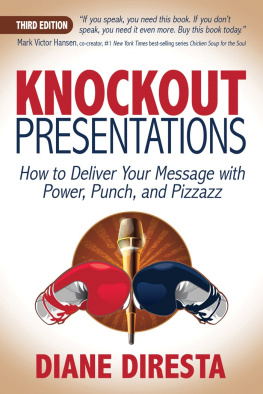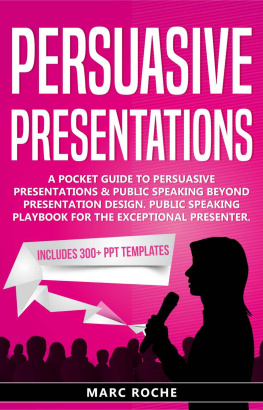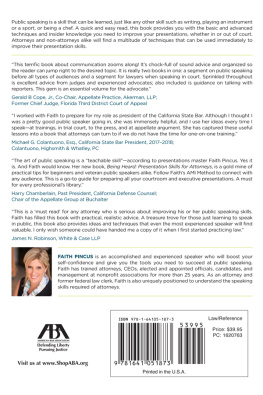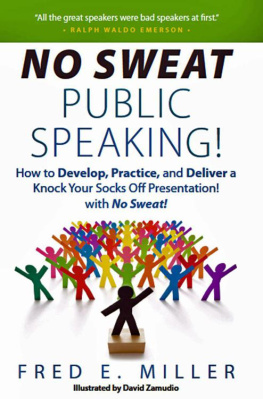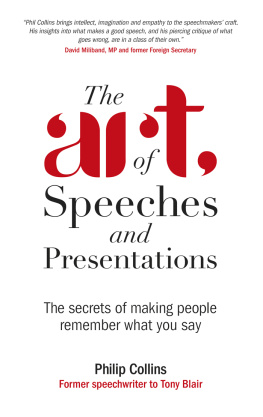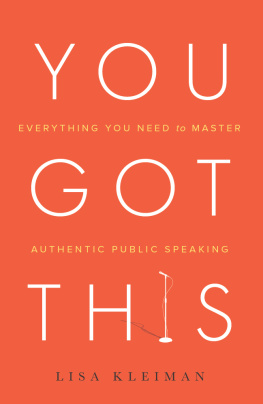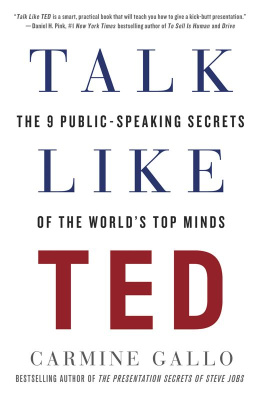EMOTE
EMOTE
Using Emotions to Make
Your Message Memorable
By Vikas Gopal Jhingran

Copyright 2014 by Vikas Gopal Jhingran
All rights reserved under the Pan-American and International Copyright Conventions. This book may not be reproduced, in whole or in part, in any form or by any means electronic or mechanical, including photocopying, recording, or by any information storage and retrieval system now known or hereafter invented, without written permission from the publisher, The Career Press.
EMOTE
EDITED BY ROGER SHEETY
TYPESET BY DIANA GHAZZAWI
Cover design by Howard Grossman/12E Design
Printed in the U.S.A.
To order this title, please call toll-free 1-800-CAREER-1 (NJ and Canada: 201-848-0310) to order using VISA or MasterCard, or for further information on books from Career Press.

The Career Press, Inc.
220 West Parkway, Unit 12
Pompton Plains, NJ 07444
www.careerpress.com
www.newpagebooks.com
Library of Congress Cataloging-in-Publication Data
Jhingran, Vikas Gopal.
Emote : using emotions to make your message memorable / by Vikas Gopal Jhingran.
pages cm
Includes index.
ISBN 978-1-60163-304-0 (pbk.) -- ISBN (invalid) 978-1-60163-488-7 (ebook) 1. Public speaking. 2. Oral communication. 3. Emotive (Linguistics) I. Title.
PN4129.15.J48 2014
808.51--dc23
2013040945
This book is dedicated to my parents, Manoj Gopal Jhingran and Ranjana Jhingran. Their sacrifice and love have made it possible for me to write this book.
Acknowledgments
This book would not have been possible without the support of my wife, Anjali. She has been patient and supportive beyond my imagination. Be it reviewing the manuscript or giving additional time to two young children so that I can write, she is the reason I have been able to write this book.
I also want to thank my parents for their enthusiasm and support. Their excitement at my success is so pure and unconditional. It is wonderful to have them in my camp.
Several people at Shell helped along the way. Ram Gopalkrishnan provided valuable feedback that sparked several ideas. Similarly, Stephen Hodges started a chain of ideas around introverts and extraverts when he reviewed Susan Cains book, Quiet. I thank Robert Patterson for taking the time to read the manuscript and provide comments on applicability of the concepts in business settings. I also thank Aamir Farid for his time and encouragement through the years. Discussions on verbal communication with Aamir helped energize and clarify many issues.
I thank my group of friends in Houston for the many discussions and endless support that they provided. I am sorry I could not fulfill your request to include a chapter called Sex and Communication to ensure huge sales of the book. Your craziness and support have helped me endure.
Special thanks to my literary agent, Anne Devlin, for having the courage to take on a first-time author. I hope every first-time author has a chance to work with an agent like Anne. She is responsive and supportive, yet practical. She did an outstanding job.
I also appreciate Career Press for their confidence in Emote. Their staff has been very helpful and encouraging.
A special thank you to Monica at RootSky Books for editing the book and helping me prepare a proposal. She laid a good foundation that helped me find a publisher.
I also want to thank Rice University for access to their libraries. I spent many weekends there poring over reference books and magazines. Their staff is always courteous and very helpful.
Contents
Chapter 5: Practical Examples of the Emotional
Approach to Communication
Chapter 9: Nonverbal Communication:
Gestures, Props, and Stage Use
Introduction
In 2001, I was gainfully employed in the oil and gas industry in Houston, Texas. I worked with some very smart people in a small boutique engineering firm. We targeted a niche in the offshore oil and gas sector and were good at it. I enjoyed my work but was frequently irritated that I was not allowed to make presentations to clients on the work that I had performed. My manager and I often discussed this issue and he was candid with me: Vikas, we dont get many opportunities to make these presentations. Under such circumstances, its only appropriate that our best speaker and presenter stand up in front of potential clients.
I could not argue with this sentiment. I would do the same if I owned the company.
Instead, I decided to improve my presentation skills. I committed to becoming so good at presentations that it would be a disadvantage for my company not to let me stand up in front of clients. Over the next few months, I feverishly searched for courses and classes that could help me become a better speaker. I did not find many options.
After considerable research, I joined the Dale Carnegie Course. This was not a public speaking course per se, but a leadership course. However, it did have a speaking component built into it, and rightly so because verbal communication is an important aspect of leadership. The course required many short speeches, most of them only two minutes long. The first speech I made during the course was a two-minute talk introducing myself to the other class members. Even though I was supposed to talk about myself, I had prepared well. I had gone over the talk many times, written it out on a sheet of paper, and made sure I covered some key points.
Nothing, though, could have prepared me for what came next. When my turn came to speak, I was so nervous that my hands were shaking. I had brought notes with me, but they were useless because my hands were shaking so much that I could not read them. I finally decided to keep my hands in my pockets, knowing full well that I was not supposed to do that. However, I did not want my fellow classmates to notice my shaking hands. When I was done with my speech, I did not remember a word I had said. I was just happy that it was over.
This experience was eye-opening for me. It bothered me that I could be so scared of anything, let alone something as innocuous as speaking in front of people. Growing up in India, I had relatively few opportunities to make presentations. Though I did attend a high school with a very good debating team, I was not on it. Neither was I part of any forum that would allow me to get in front of people. Whenever I had some spare time, it was invested in working hard at math and science so that I could go to a good university in India. Speaking, communications, or even an interview, was not part of the selection process to get into an engineering university. All this ensured that in 2001 I found out that I was second to none in anything related to math, science, and engineering but was way behind on the communication and presentation aspects. No one had told me that this would matter in my professional growth.
From those humble beginnings, I worked hard and grew rapidly as a speaker during the three-month Dale Carnegie Course. After it was over, I continued to look for a forum to practice my speaking skills and came across Toastmasters International. This turned out to be a true blessing. Toastmasters clubs offer an ideal forum to hone and experiment with presentation techniques. From 2002 on, I got many opportunities to practice my speaking skills during Toastmasters club meetings, but more importantly, I got the opportunity to be around some very good speakers who helped and mentored me.
Next page

